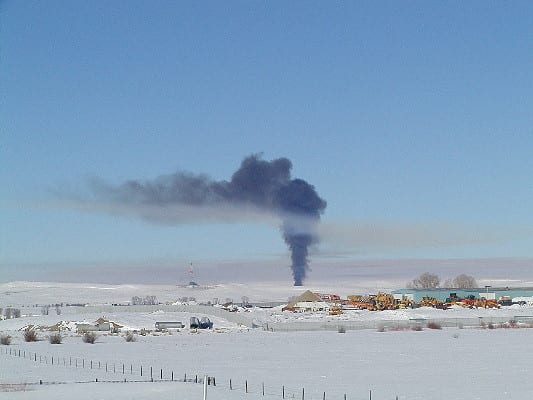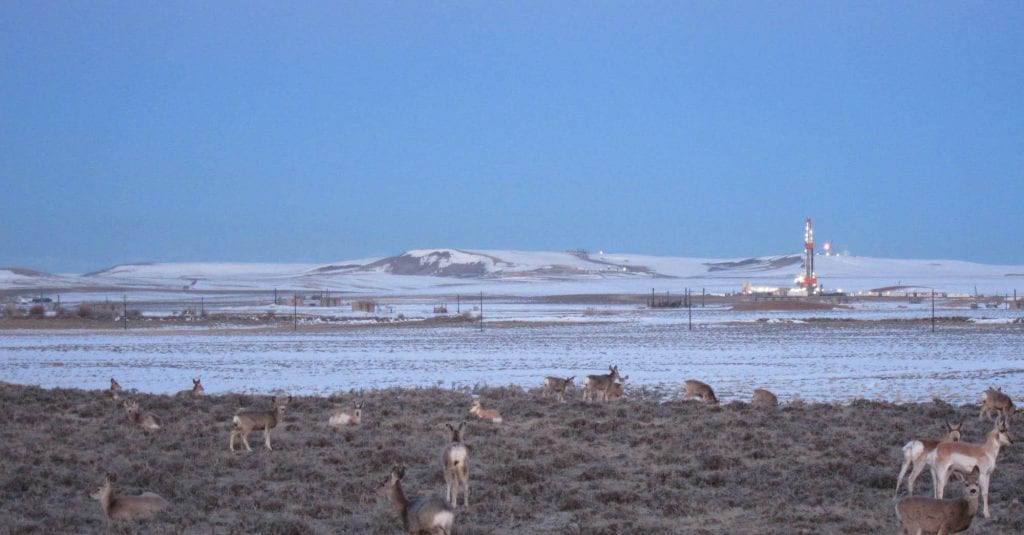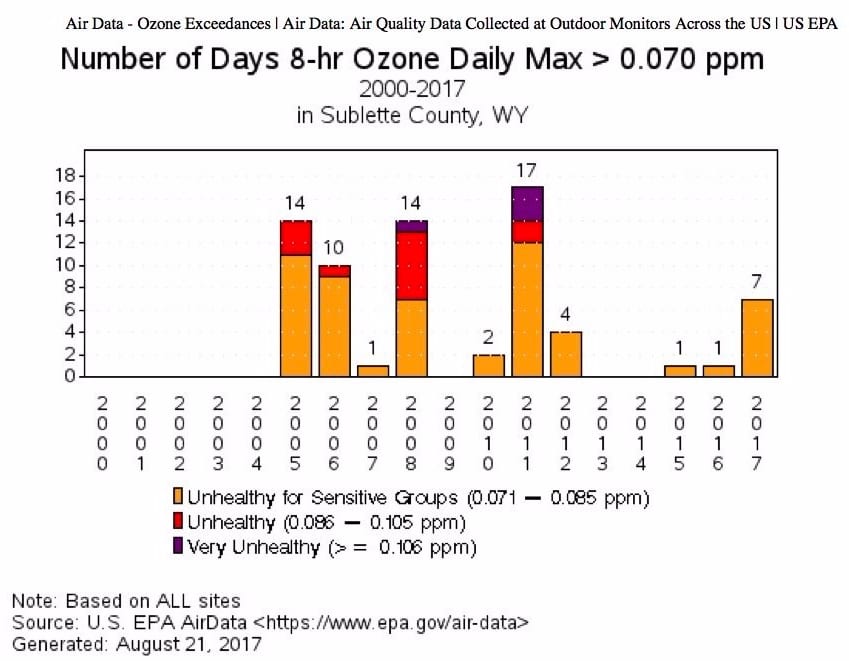
Flaring in the Upper Green River Basin, Wyoming. Photo courtesy of Sky Truth and William Belveal, Upper Green River Valley Coalition.
Let’s start with a number: 3,500. What does that mean to you? Probably not much. Now, let’s put it in context. 3,500 new fracking wells. Impressive? No? What if I tell you that these new wells will more than double the number of existing wells in the area and increase the number of new wells drilled in the area from 3 per year to 350 per year. Definitely more concerning, right? On top of this, the area in question will see almost 12,000 new gas wells over the next 10 to 15 years. Hopefully now you’re outraged. You should be; 93% of the wells will be on public land, our public land.
These numbers come directly from the environmental analysis of the “Normally Pressured Lance Project,” a fracking scheme up for approval by Secretary of Interior Zinke and the Wyoming Bureau of Land Management. This scale of development would be intense in any area, but, this disaster is in the middle of a key wildlife corridor and an area that’s been suffering from L.A.-like air pollution issues — the Upper Green River Basin of Wyoming.

A drilling rig, pronghorn antelope, and mule deer in the Upper Green River Basin, Wyoming. Photo courtesy of Dustin Bleizeffer, WyoFile.
The Upper Green River Basin has been called “the Serengeti of the West.” The Basin is home to the longest land mammal migration route in the continental U.S. for pronghorn antelope and countless moose, mule deer, sage grouse. But, the Basin’s wildlife population is rapidly declining under the existing number of oil and gas wells. Deer numbers have dropped almost 40% since development began.
On top of this, the Basin’s air quality was just starting to make some progress after many years of heavy smog. In 2012 the Environmental Protection Agency officially declared the area “hazardous for public health” from high levels of ozone (a compound formed when the oil and gas industry releases chemicals during development and these chemicals react in the atmosphere). But, for the past couple of years, the air seemed to be improving. Unfortunately, in early 2017, it took another dive. The Basin violated the air quality standard for ozone seven times this last winter.

One might think that the logical answer to this problem is to stop new development. But, unfortunately, when it comes to oil and gas, Secretary Zinke’s greed outweighs the need to protect public health and wildlife. Not only is the BLM proposing to move forward with the project, the BLM is stubbornly refusing to limit development so that it will comply with the current Clean Air Act standards for ozone. The agency’s own analysis says that 160 wells per year is the maximum the Basin can handle. BLM intends to allow 336 per year.
We intend to hold the BLM accountable, and stop this disastrous fracking proposal in its tracks. Guardians just submitted extensive comments on the project and hammered the BLM on its severely deficient air quality analysis. And, we will keep monitoring the project to ensure that it does not move forward in the future. Someone needs to ensure that our public lands, clean air, and wildlife don’t end up sacrificed for profit. That someone is WildEarth Guardians.